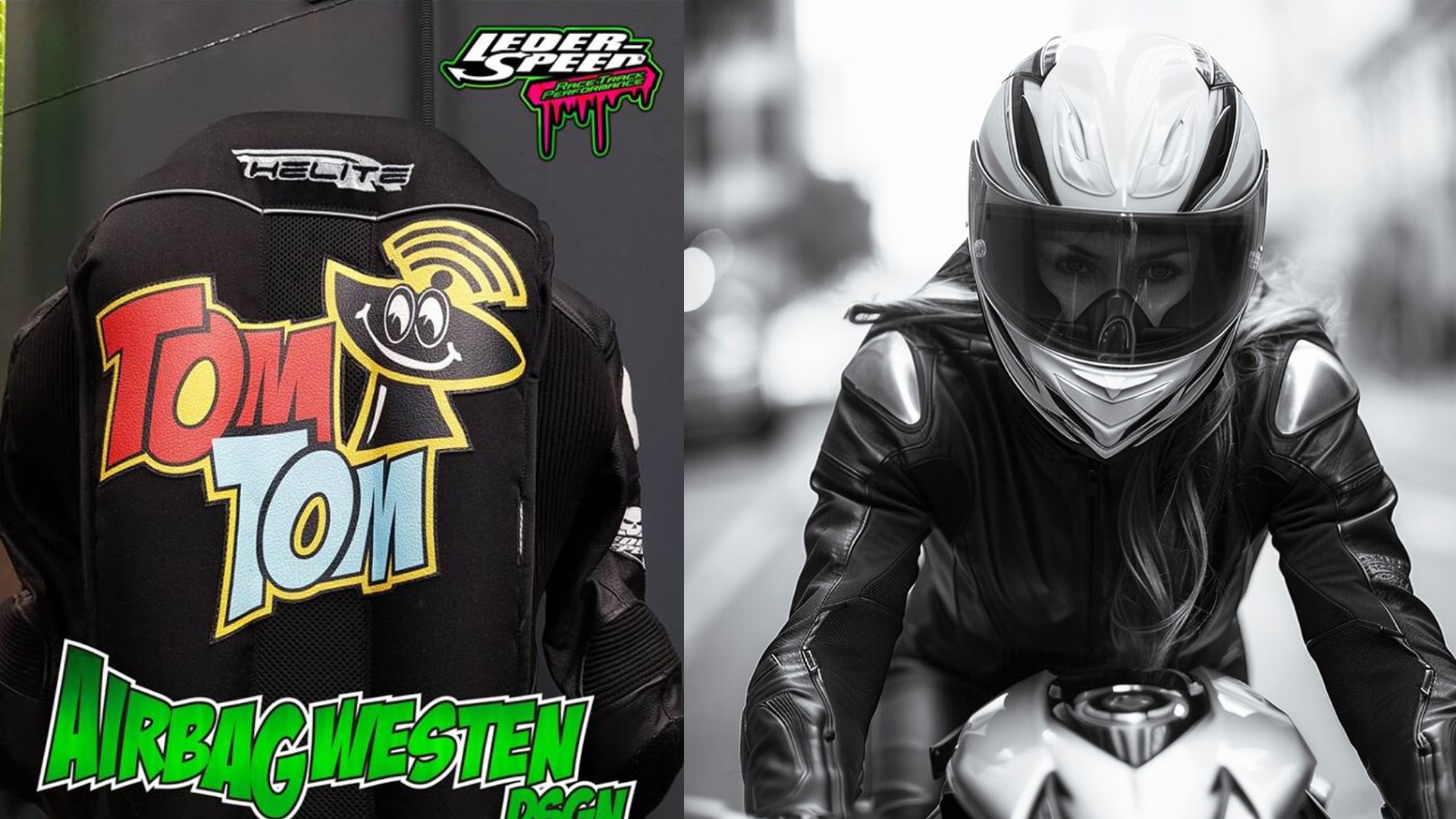Reverse Engineering for creating a protective cover for an airbag vest

TitleNutzen von Airbag-Westen für Motorradfahrer
Airbag-Westen bieten Motorradfahrern seit einigen Jahren zusätzlichen Schutz, indem sie sich im Ernstfall blitzschnell aufblähen und den Fahrer vor Verletzungen bewahren. Die Firma Leder-Speed, spezialisiert auf Airbag-Westen im Rennsport, nahm sich dieser Herausforderung an. In Zusammenarbeit mit Felix Berberich von "Being Fast" entwickelte das Unternehmen mittels Reverse Engineering eine Schutzhülle für die Kartusche. Nach erfolgreichen Tests wurde ein Prototyp im 3D-Druckverfahren gefertigt – ein innovativer Lösungsansatz für ein spezifisches Problem im Motorradsport.
TitleNutzen von Airbag-Westen für Motorradfahrer
Seit einigen Jahren gibt es Airbag-Westen für Motorradfahrer. Dabei löst im Ernstfall ein mechanischer oder elektronischer Sensor eine Gaspatrone aus, die dann blitzschnell die Airbag-Weste füllt. Damit wird der Fahrer durch die Weste mehrfach geschützt, z. B. gegen das Aufprallen; weiterhin fixiert die Weste auch den Helm.
Die Gaspatronen sind aus Metall und befinden sich an der Außenseite der Weste, da die Kartusche oft mit einem Band, das zum Auslösen dient, mit dem Motorrad verbunden ist.
Hier ergibt sich folgendes Problem: Bei sportlichen Fahrern, die sehr aerodynamisch auf dem Motorrad sitzen, reibt die Metallkartusche auf dem Tank (z. B. bei Bodenwellen). Dadurch kann es zu Beschädigungen am Lack des Tanks kommen.
Title Leder-Speed erarbeitet Lösungsansatz
Die Firma Leder-Speed aus Limbach Oberfrohna ist Händler für Airbag-Westen, vorrangig im Bereich des Rennsports. Sie gehört zu den wenigen Betrieben, die Airbag-Westen bearbeiten darf, beispielsweise das Anbringen von Startnummern oder Aufnähern von Sponsoren.
Einige Besitzer der Airbag-Westen traten an Nico Bachmann, den Inhaber von Leder-Speed, heran und fragten, ob der Hersteller für diese Problematik eine Lösung hat. Da dieses Problem nur bei einer sehr kleinen Gruppe, den Sportfahrern, auftritt, hatte der Hersteller noch keine Antwort parat.
Die Idee der Firma Leder-Speed war es, die Gaskartusche mit einer Schutzhülle zu überziehen. Dazu musste erst einmal ein Design und ein Werkzeug entwickelt werden. Das Design wurde nach einigen Tests erfolgreich entwickelt und in einem 3D-Drucker als Prototyp hergestellt. Das finale Design sollte als Vorlage dienen, um davon die Produktionsteile zu fertigen. Also ein klassischer Fall für das Reverse Engineering.
Der beste Weg hierfür war es, das vorhandene Teil zu scannen und daraus dann ein Werkzeug zu entwickeln. Für das Reverse Engineering unterstützte uns Felix Berberich von der Firma "Being Fast".
Benefit of airbag vests for motorcyclists
Airbag vests for motorcyclists have existed for several years. That means in case of emergency, a mechanic or electronic sensor triggers a gas cartridge that charges the vest with lightning speed. Thus, the rider is protected manyfold by the vest, e.g. against the bounce; moreover, the vest secures the helmet.
Gas cartridges are made of metal and are located at the outside of the vest since the cartridge is often connected to the motorbike by means of a strap that serves as a trigger.
The problem is the following: Sporting riders, who sit very aerodynamically on the bike, know the metal cartridge rubbing on the tank (e.g. in the case of bumps). This abrasion can damage the tank's coating.
Lederspeed develops problem-solving approach
The company Leder-Speed from Limbach Oberfrohna (Germany) is dealer of airbag vests, primarily in the field of racing. Leder-Speed is one of just a few companies that is authorized to edit airbag vests, for instance attaching numbers or patches of sponsors.
Some holders of airbag vests contacted Nico Bachmann, owner of Leder-Speed, and asked for a solution for the difficulty. Since just a very small group (sport riders) is faced with this problem, the manufacturer couldn't provide a solution at that time.
The idea of Leder-Speed was to cover the gas cartridge with a protective cover. For this purpose, he has to develop the design and a tool. After several tests, the design has been developed successfully and produced as a prototype in a 3D printer. The final design should serve as a model to produce manufactured parts. That`s a classic case for reverse engineering.
The best way was to scan the existing part and to develop a tool based on the scan. Felix Berberich of the company "Being Fast" supported us for the reverse engineering.
The following steps were necessary for reverse engineering:
1. 3D scan of the original part
A Steinbichler Comet 3 scanner was used for this job. This scanner works very accurately in the field of hundredths of a millimeter; furthermore, it has a high resolution, too.
Comet 3 is a structured light scanner. A structured light scanner projects a light patterns to the part and, then, used one or more cameras to monitor it. Thanks to triangulation, the scanner can generate a 3D surface.
2. Import of STL file in Catia V5
3. Creation of an object-related coordinate system
4. Capture of basic geometries such as cylinders, planes, spheres
5. Entire surface reconstruction of the part in a parametric and modifiable data set (adjustment of the model possible at any time – e.g. enlargement of recesses, length/width/height, holes, wall thickness, etc. – All dimensions are modifiable!)
6. Construction pf a press tool for creating a series of prototypes in silicone rubber
Vents for excess material, centerings and screw holes for diccrimping the halves of the tool are integrated. (Press tool parametric to the reconstructed part. That means: If a dimension of the reconstructed part is changed, it is changed in the tool at the same time.)
7. 3D print of prototype tool using FDM procedure (affordable since the project budget was small – further procedures: SLA tools temperature stable till 280°C for injection molding applications in small batch series.)
Further fields of application for reverse engineering
Aprt from tools, all parts can be reconstructed and represented due to rapid prototyping.
Fields of application
- Orthopedic technology (protheses, masks (soccer), etc.)
- Ergonomic studies (handles, products, etc. – reconstruction, adjustment, production-ready design and prototyping in numerous polymer and rubber mixtures)
- Machine engineering
- Automotive industry
- Product design
- and many more
This project was a joint work of Laserscanning Europe, Leder-Speed and Being Fast.